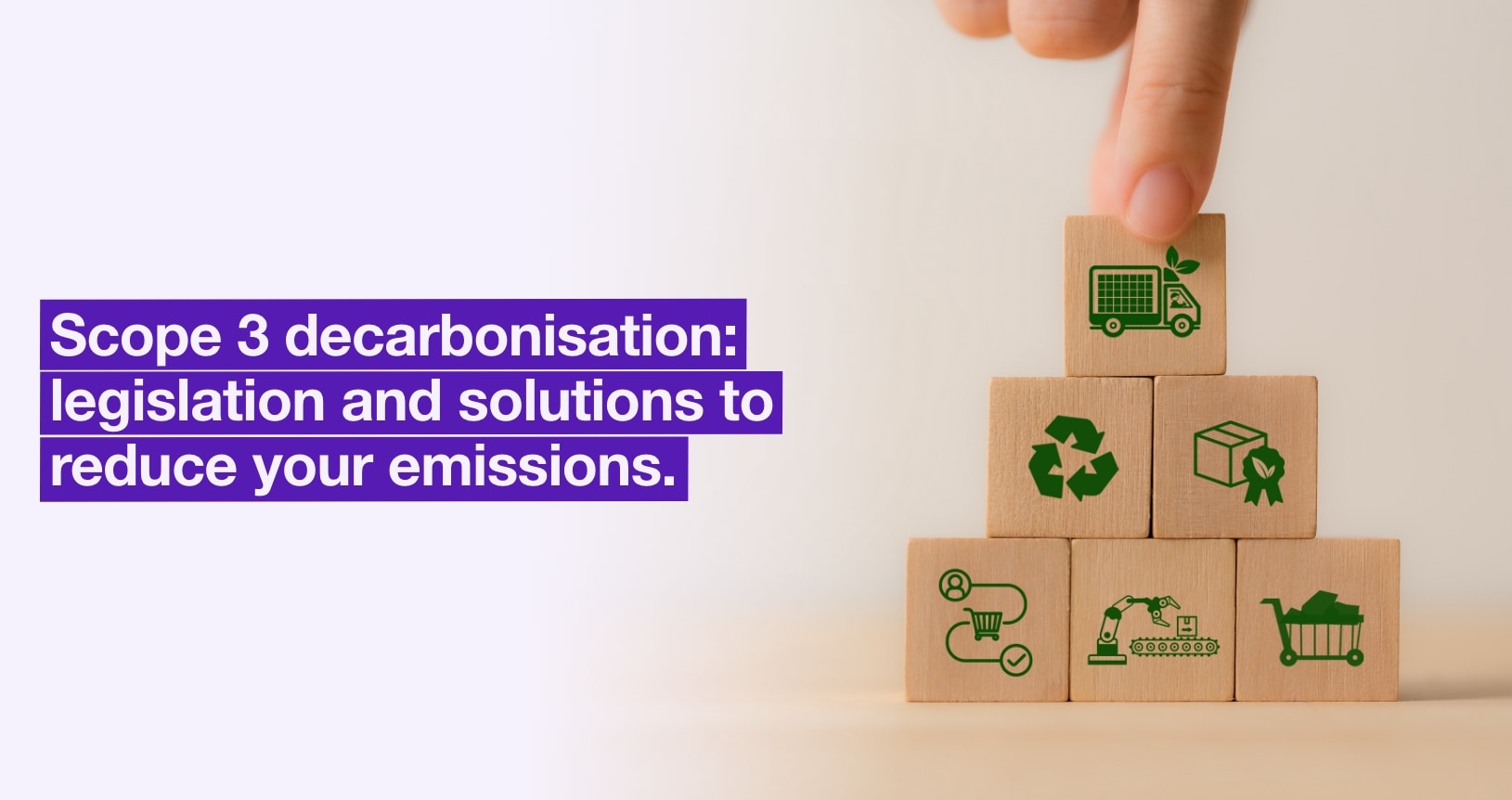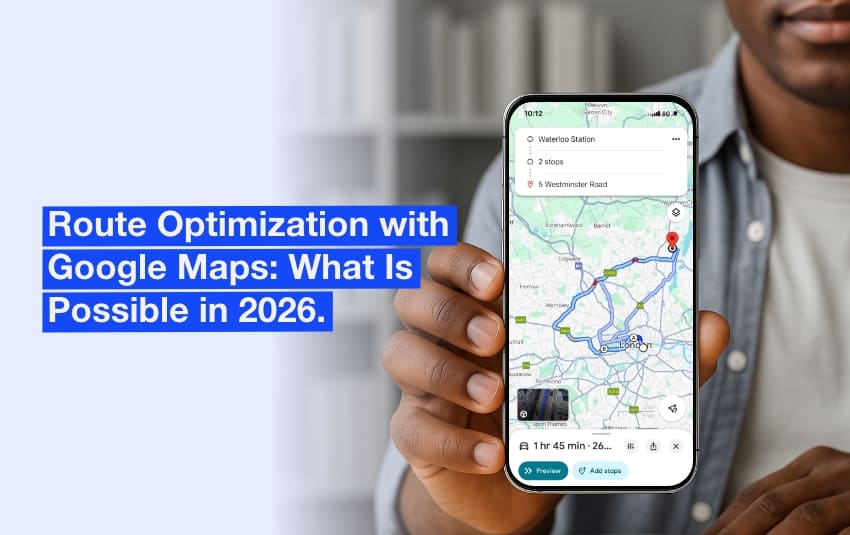Decarbonising Scope 3: Origins, measures and concrete examples applied to transport
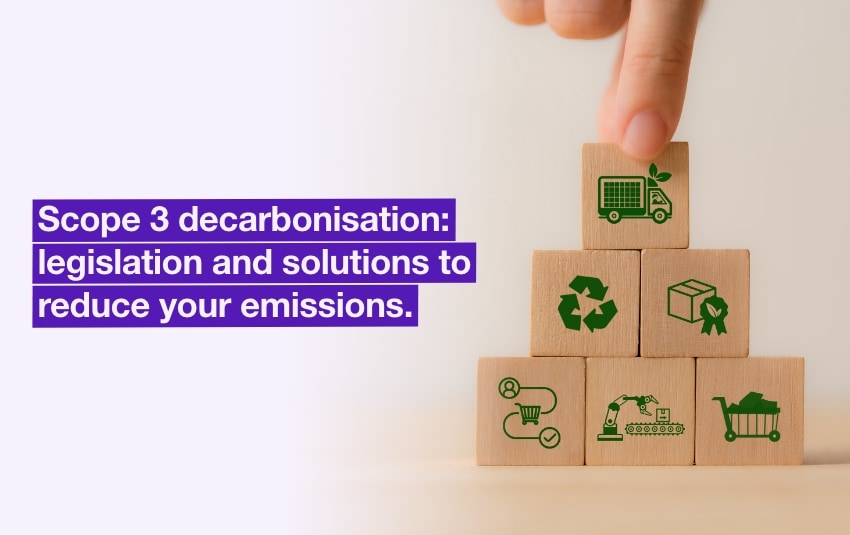
Decarbonisation has become a fundamental issue in the fight against climate change. Large and small companies alike are being urged to take drastic measures to reduce their greenhouse gas (GHG) emissions. These emissions are classified into three categories: scope 1 (direct emissions), scope 2 (indirect emissions linked to energy consumption), and scope 3, which covers all other indirect emissions linked to a company’s activity. A large proportion of these relate to our transport activities.
But while scopes 1 and 2 have become familiar to us, scope 3 is still abstract for many of us. In the UK, Scope 3 emissions reporting is currently voluntary. However, this is changing due to upcoming regulations and international standards, particularly the International Sustainability Standards Board (ISSB). The Scope 3 reporting is expected to become mandatory for every public and private companies in the years to come.
So what exactly does scope 3 cover, and how can we reduce the emissions it contains, particularly those linked to transport? We tell you all about it in this article.
Table of contents:
- What does Scope 3 cover?
- Who is required to report Scope 3 emissions?
- The challenges of measuring and decarbonising Scope 3
- Decarbonisation in logistics and transport: a major challenge for scope 3
Decarbonising scope 3 is essential for companies seeking to reduce their carbon footprint. By targeting indirect emissions, they can significantly reduce their environmental impact. Aligning with these objectives is becoming essential to comply with new regulations.
What does Scope 3 cover?
Let’s start by defining the word scope, this increasingly widespread term.
Scope refers to the perimeter or extent of a project, task or function. It is often used in software development. It is used to set the limits of a project, what it does and
In the subject that concerns us, scopes 1, 2 and 3 determine the perimeters for accounting for emissions of CO₂ or equivalent. They cover CO2 emissions upstream and downstream of the company’s activities.
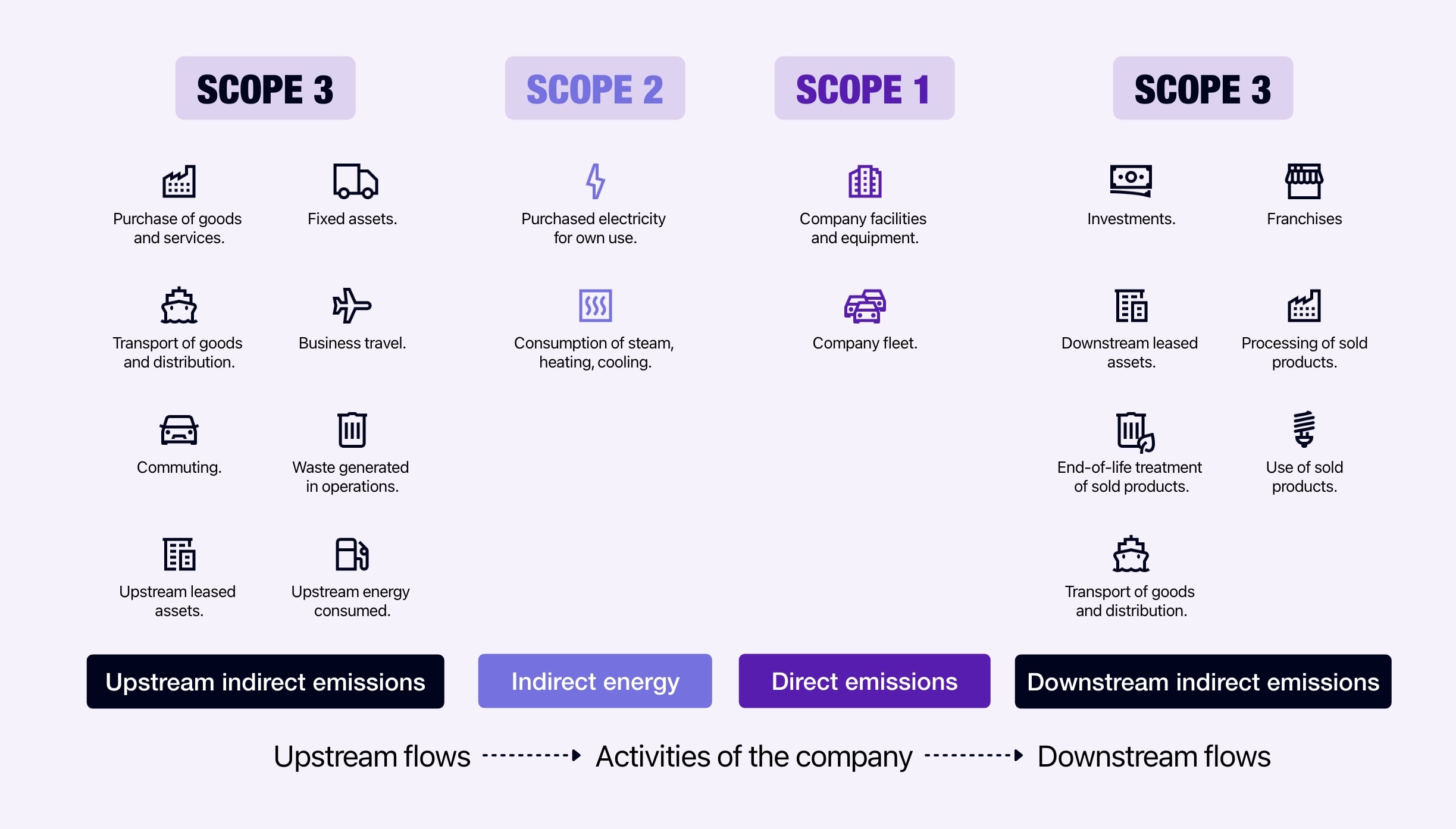
The 3 carbon emission scopes.
Scope 1 covers emissions directly generated by the company’s activities, such as fuel consumption for fleet vehicles, energy use in buildings (excluding electricity and heat from networks), refrigerant gas leaks and energy used in production processes.
Scope 2 covers indirect emissions linked to the production of energy used by the company, such as electricity or heat from heating networks.
Scope 3 covers all the other indirect emissions upstream and downstream of the company’s activity: employee commuting, the purchase of goods and services, their transport and distribution, the treatment of waste generated, the processing and use of products sold, etc.
In France, the breakdown of these 3 scopes has been revised in the decree of 1 July 2022, to be redivided into 6 classes. The last 4 classes correspond to scope 3. This is a good example of what it could look like in the UK.
| REGULATORY METHOD VERSION 5 AND ISO/TR 14069 | CARBON ACCOUNTING | GHG PROTOCOL | ||
|---|---|---|---|---|
| Category | Item | Item | Scope | Category |
| 1. DIRECT GHG EMISSIONS | 1.1 Direct emissions from stationary combustion sources | Energy | Scope 1 | Direct emissions from stationary combustion sources |
| 1.2 Direct emissions from mobile combustion sources | Transport | Scope 1 | Direct emissions from mobile combustion sources | |
| 1.3 Direct emissions from non-energy processes | Excluding energy | Scope 1 | Direct emissions from physical or chemical processes | |
| 1.4 Direct fugitive emissions | Excluding energy | Scope 1 | Direct fugitive emissions | |
| 1.5 Emissions from biomass (soil and forests) | Non existent | Scope 1 | Optional information | |
| 2. INDIRECT EMISSIONS RELATED TO ENERGY | 2.1 Indirect emissions from electricity consumption | Energy | Scope 2 | Indirect emissions related to electricity consumption |
| 2.2 Indirect emissions from energy consumption other than electricity | Energy | Scope 2 | Indirect emissions related to the consumption of steam, heat or refrigeration | |
| 3. INDIRECT EMISSIONS RELATED TO TRANSPORT | 3.1 Upstream transportation of goods | Transport | Scope 3 | 4. Upstream transport and distribution |
| 3.2 Downstream transportation of goods | Transport | Scope 3 | 9. Downstream transport and distribution | |
| 3.3 Commuting | Travel | Scope 3 | 7. Employee commuting | |
| 3.4 Visitor and customer travel | Travel | Scope 3 | Non existent | |
| 3.5 Business travel | Travel | Scope 3 | 6. Business trips | |
| 4. INDIRECT EMISSIONS RELATED TO PRODUCTS PURCHASED | 4.1 Purchases of goods | Input | Scope 3 | 1. Products and services purchased 3. Fuel- and energy-related activities |
| 4.2 Fixed assets | Fixed assets | Scope 3 | 2. Fixed assets | |
| 4.3 Waste management | Direct waste | Scope 3 | 5. Waste generated in operations | |
| 4.4 Upstream leased assets | Depends on the type of asset | Scope 3 | 8. Upstream leased assets | |
| 4.5 Purchases of services | — | Scope 3 | 1. Products and services purchased | |
| 5. INDIRECT EMISSIONS RELATED TO PRODUCTS SOLD | 5.1 Use of sold products | Use | Scope 3 | 1. Products and services purchased 11. Use of sold products |
| 5.2 Downstream leased assets | Depends on the type of asset | Scope 3 | 13. Downstream leased assets | |
| 5.3 End of life treatment of sold products | End of life | Scope 3 | 12. End-of-life treatment of sold products | |
| 5.4 Investments | Non existent | Scope 3 | 15. Investments | |
| 6. OTHER INDIRECT EMISSIONS | 6.1 Other indirect emissions | Non existent | Scope 3 | Non existent |
The data in the table is taken from ecologie.gouv.fr, Méthode pour la réalisation des bilans d’émissions de gaz à effet de serre, 2022.
Scope 3 emissions are easier to distinguish in this way. They are broadly divided between indirect emissions associated with transport, products purchased and products sold.
The transport category includes emissions linked to the transportation of goods upstream and downstream, as well as travel by visitors, customers and employee commuting.
Indirect emissions linked to the purchase of products and services include, in addition to purchases, fixed assets, leased assets and waste management.
Regarding sales, leased assets and fixed assets are also accounted for, as well as the use and end of life treatment of products.
The 6th category includes all other indirect emissions that do not fit into the previous boxes.
Who is required to report Scope 3 emissions?
The concept of scope 3 was introduced in 2001 with the publication of the Greenhouse Gas Protocol (GHG Protocol). The aim of this protocol was to create a standardised method for measuring greenhouse gas (GHG) emissions. Previously, the focus had been on direct emissions (Scope 1). However, it was soon recognised that indirect emissions linked to value chain activities (upstream and downstream) accounted for a significant proportion of overall emissions. Scope 3 was therefore developed to cover these emissions, which often account for more than 70% of total emissions in many sectors.
With the rise in environmental concerns and the commitments made in frameworks such as the Paris Agreement (2015), the management of Scope 3 emissions has become a key issue in achieving international climate objectives.
Today, more and more companies, especially those subject to new climate reporting obligations such as the CSRD in Europe, are required to measure and reduce their Scope 3 emissions in order to meet regulatory and stakeholder expectations.
In the UK, the legislation on carbon footprints has become tougher in recent years. Streamlined Energy and Carbon Reporting (SECR) introduced a government initiative in April 2019 to encourage energy efficiency and reduce carbon emissions.
SECR applies to large UK-incorporated companies and Limited Liability Partnerships (LLPs). The key thresholds for businesses required to comply are based on size, covering companies that meet at least two of the following criteria:
- At least 250 employees.
- Annual turnover of £36 million or more.
- Balance sheet total of £18 million or more.
SECR focuses primarily on Scope 1 and Scope 2, but many companies choose to include Scope 3 emissions as part of their overall carbon reporting strategy.
As pressure grows from stakeholders for businesses to disclose more information on their environmental impact, the inclusion of Scope 3 in voluntary reporting may become increasingly common, complementing SECR’s requirements.
CSRD: Towards wider integration of scope 3
At European level, the CSRD (Corporate Sustainability Reporting Directive) came into force on 1 January 2024. It strengthens non-financial reporting obligations for companies with more than 500 employees or sales of more than €50 million. It also requires more exhaustive reporting of Scope 3 emissions. These companies will have to provide complete and transparent information on their emissions, including those from their suppliers, subcontractors and carriers, who are often responsible for a major proportion of Scope 3 emissions.
Although this is an EU Directive, UK companies are affected if: they have securities listed on an EU regulated market, they carry on significant business in the EU, and/or they were previously covered by the Non-Financial Reporting Directive (NFRD).
From 1 January 2025, companies with more than 250 employees will also be affected. And from 1 January 2026, it will be listed companies that will be involved.
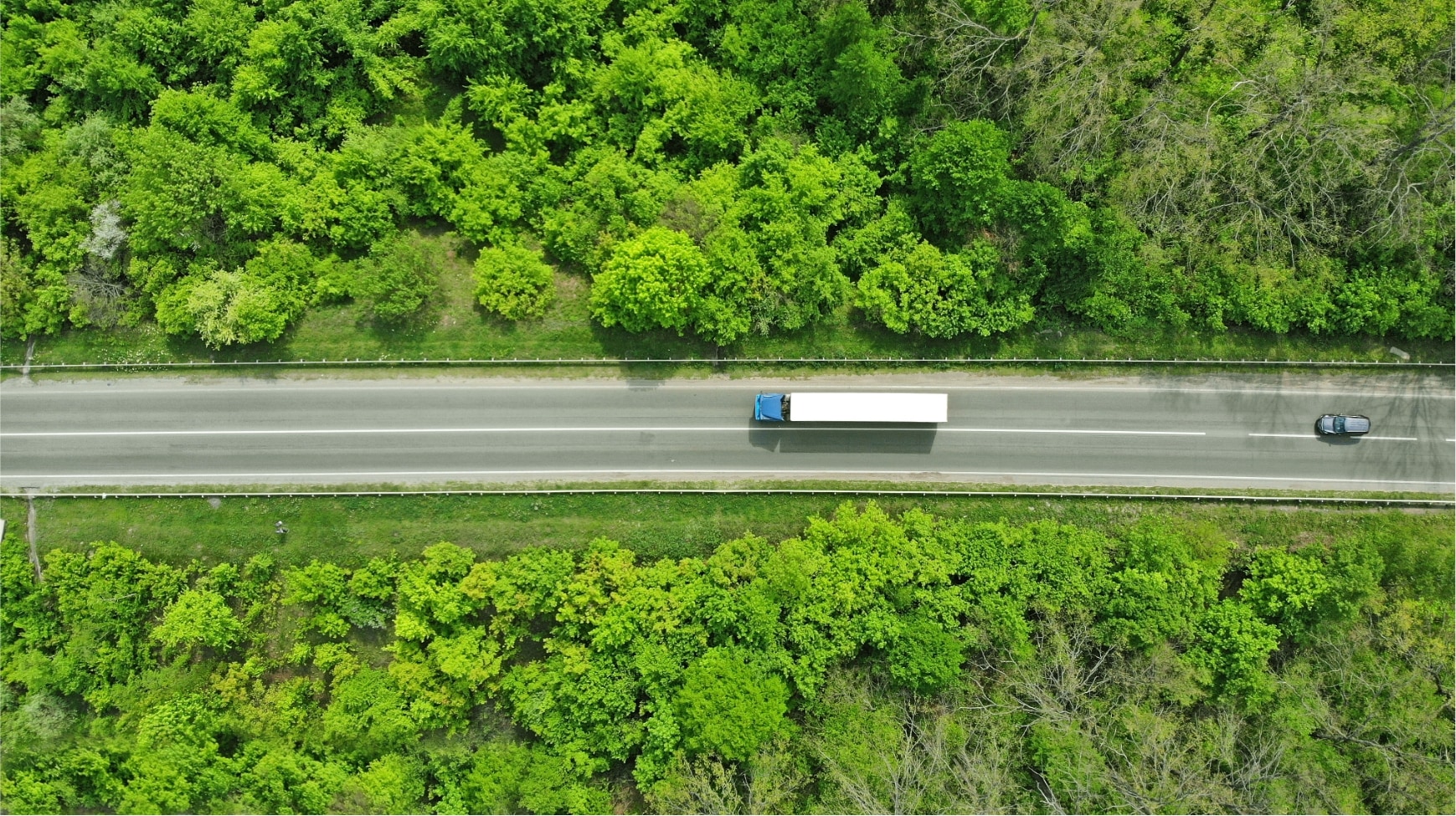
The Scope 3 reporting should become mandatory for every public and private companies in the future.
The challenges of measuring and decarbonising Scope 3
Complexity of scope 3 measurement
The first obstacle facing companies is collecting the data needed to calculate scope 3. Unlike scopes 1 and 2, which depend mainly on internal data, scope 3 involves third parties, which complicates the accuracy of the information. Companies have to request information from their suppliers, subcontractors and customers, often without having direct control over the data. For example, a distribution company that purchases manufactured goods abroad must obtain emissions data from each player in the production chain, which can be difficult to coordinate.
Multiple sources of emissions
The 15 categories of scope 3 (classes 3 to 6), as defined by the Greenhouse Gas Protocol, cover a wide range of activities. Companies should therefore endeavour to identify all relevant sources of emissions, including:
- Goods and services purchased (e.g. raw materials or manufactured products).
- Employee travel and commuting (company cars, planes).
- Waste generated by operations.
- Transport and distribution of finished products.
This multitude of sources makes the task of quantification more complex, as each activity requires specific methods for collecting data and calculating emissions.
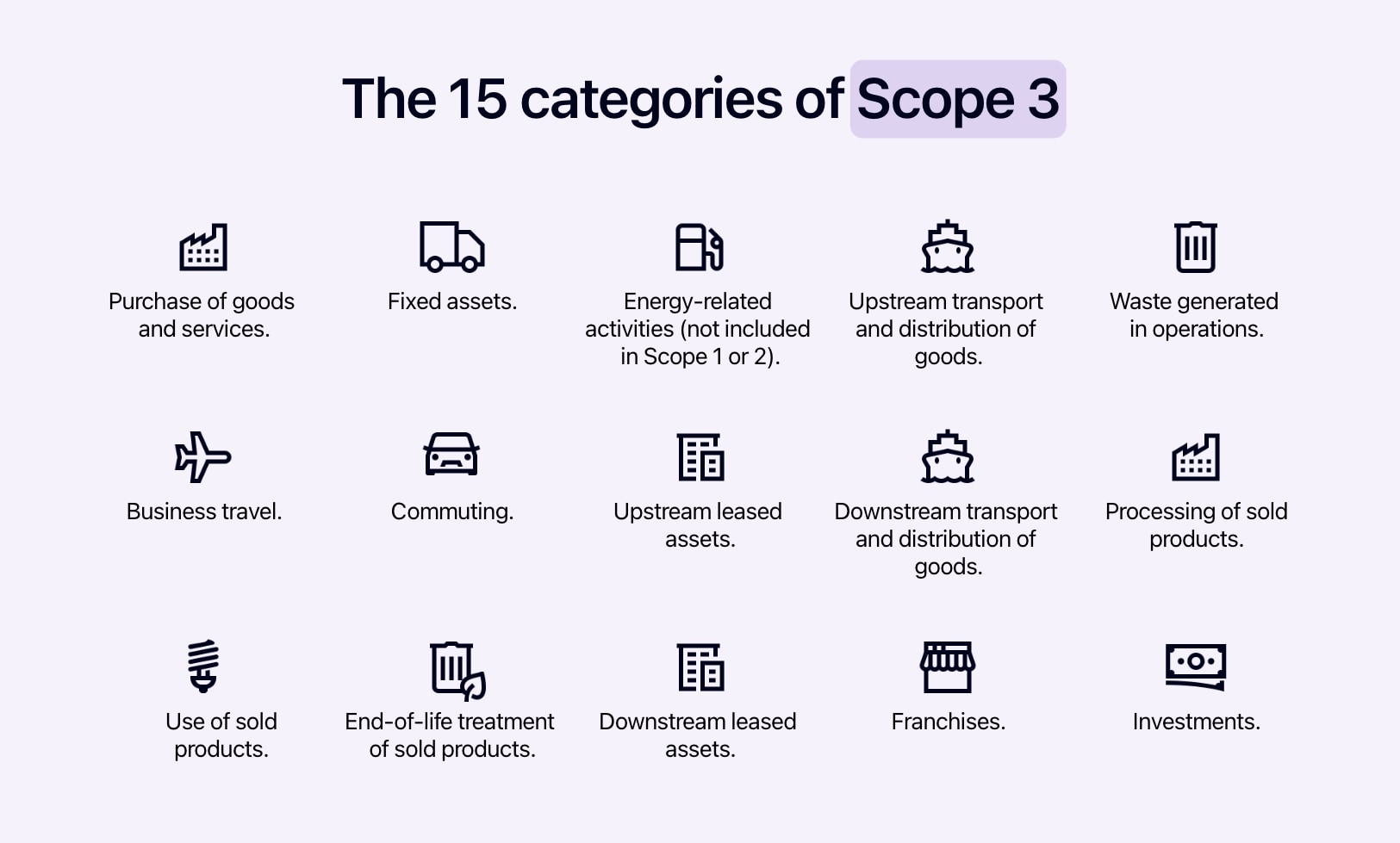
The 15 categories of Scope 3.
Scope 3 emission factors
One of the most critical steps in measuring Scope 3 emissions is the use of emission factors. These factors are coefficients that convert activity data (such as litres of fuel or kilometres travelled) into CO₂ equivalents (CO₂ e). It is important to use emission factors specific to the activities under consideration and geographical regions, to obtain accurate results. Sources such as the International Energy Agency (IEA) provide these coefficients, adapted to national and sectoral contexts.
Reducing Scope 3 emissions
Once you have calculated and analysed these emissions, you will need to look at possible ways of reducing them, to pave the way for real decarbonisation.
Emissions from transport and logistics account for a large proportion of Scope 3 emissions. In the final part of this article, we will look at possible ways of decarbonising Scope 3 transport emissions.
Decarbonisation in logistics and transport: a major challenge for scope 3
Optimisation of routes
In logistics, one obvious strategy for reducing emissions is route optimisation. Many companies, particularly in the e-commerce and mass distribution sectors, face major challenges in optimising delivery routes. The poor route planning can lead to unnecessary kilometres being driven, increasing fuel consumption and emissions.
Technologies such as route optimisation software that incorporate optimisation algorithms enable shorter routes to be calculated, taking into account factors such as traffic, delivery times and vehicle capacity. This is particularly true with AntsRoute‘s software. These optimised routes mean shorter distances travelled and therefore lower greenhouse gas emissions.
Concrete example: a distribution company can reduce its transport emissions by analysing the routes taken by its vehicles. For example, a route optimisation algorithm could reduce the kilometres travelled by delivery lorries by 10%, resulting in a significant drop in CO₂ emissions associated with fuel.
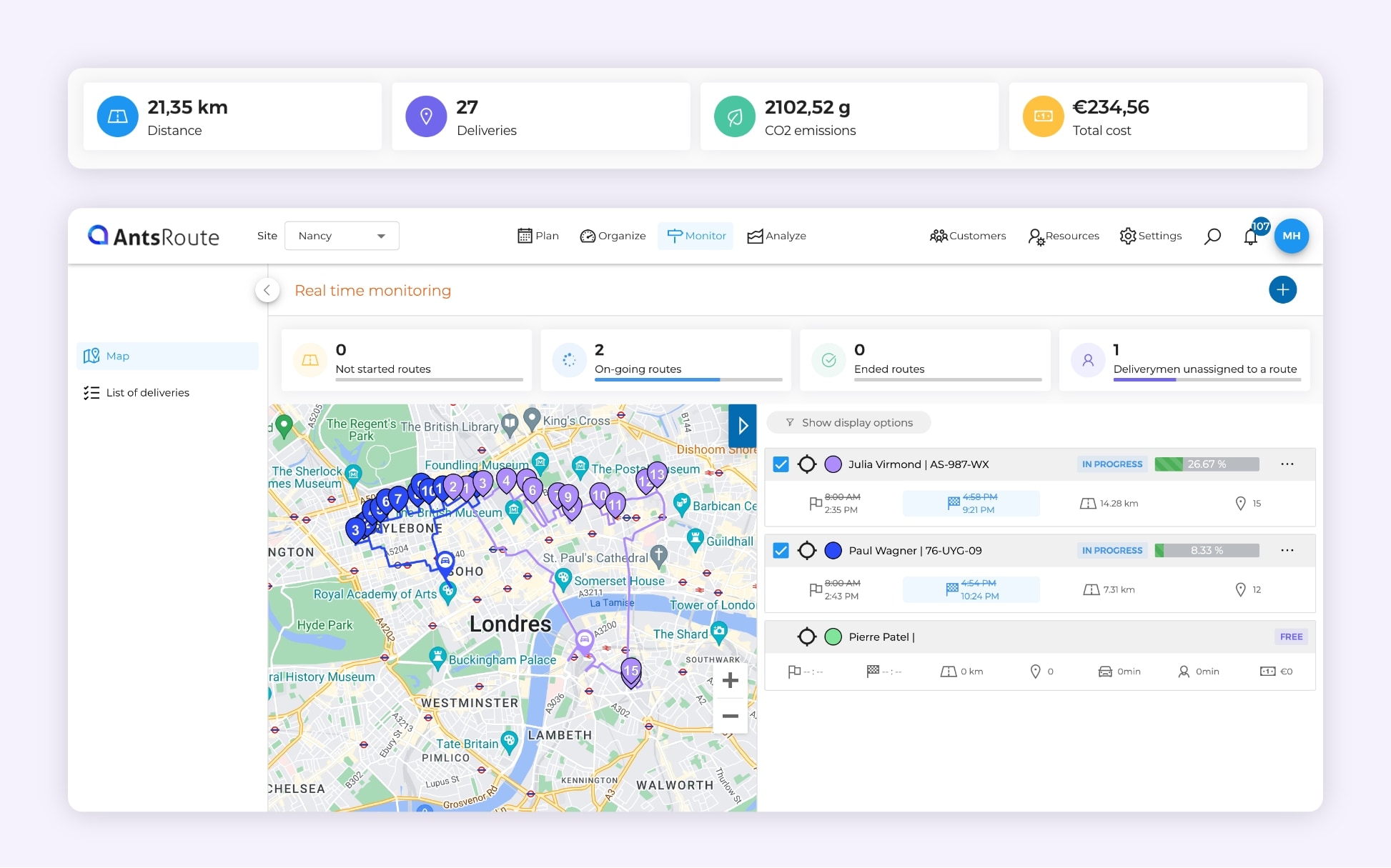
Optimising delivery routes on AntsRoute.
Sustainable vehicle fleets
Switching to greener vehicle fleets is another effective solution. Electric vehicles or even those running on biofuels make it possible to reduce CO₂ emissions linked to transport. Although these technologies may require significant initial investment, operating costs and the carbon footprint are often lower in the long term.
In addition, the development of alternative technologies, such as hydrogen-powered vehicles, is opening up new prospects for decarbonising logistics fleets. This is particularly relevant in transport-intensive sectors such as mass distribution and parcel delivery.
Pooling transport resources
Another way of taking action is to pool deliveries. Companies can cooperate to share transport resources, thereby reducing the number of vehicles used and maximising their loading capacity. This approach reduces unit emissions per delivery and spreads transport costs more evenly.
Measuring and optimising employee travel
Business travel is also a major source of emissions. To reduce these emissions, many companies are introducing teleworking policies, investing in infrastructure to enable virtual meetings, and promoting less polluting modes of transport (such as trains rather than planes, or shared vehicles).
Concrete example: A company that encourages its employees to prefer teleworking or to limit air travel can see a significant reduction in Scope 3 emissions linked to business travel.

A major challenge for Scope 3 is decarbonisation in logistics and transport.
Favouring virtuous and local suppliers
A large proportion of Scope 3 emissions come from suppliers of goods and services. To reduce these emissions, companies need to work closely with their partners to implement reduction strategies. This may involve encouraging the use of more sustainable materials, favouring suppliers who use renewable energy, or encouraging local production to reduce transport distances.
Concrete example: A company can give priority to local suppliers for its raw materials, thereby reducing the emissions linked to international transport and complex supply chains.
Reducing packaging and waste
Finally, particular attention must be paid to waste management, both in internal operations and in supply chains. Adopting circular economy practices, such as recycling or reducing the use of packaging, helps to limit the emissions associated with waste processing.
We offer you a more comprehensive overview in our article on green logistics.
As we have seen, decarbonising scope 3 is a major challenge for any company seeking to reduce its carbon footprint. Whether in logistics, supplier management or employee travel management, strategies can be implemented to measure, reduce and offset scope 3 emissions. Acting now will not only enable us to comply with growing regulations, but also to meet consumer expectations and take advantage of the competitive benefits associated with the ecological transition.
At AntsRoute, we’re here to help you optimise your journeys and reduce the emissions associated with your freight transport.
WRITTEN BY
Maryline Lakh
Maryline worked for a major logistics company for 15 years. Since 2022, she has been an expert in communication and freelance writer for positive-impact logistics companies. She is passionate about new sustainable logistics solutions and writes for several clients, including AntsRoute.
Free 7-day trial | No credit card required
Contenu
- What does Scope 3 cover?
- Who is required to report Scope 3 emissions?
- The challenges of measuring and decarbonising Scope 3
- Complexity of scope 3 measurement
- Multiple sources of emissions
- Scope 3 emission factors
- Reducing Scope 3 emissions
- Decarbonisation in logistics and transport: a major challenge for scope 3
- Optimisation of routes
- Sustainable vehicle fleets
- Pooling transport resources
- Measuring and optimising employee travel
- Favouring virtuous and local suppliers
- Reducing packaging and waste


